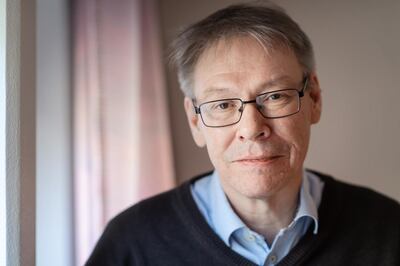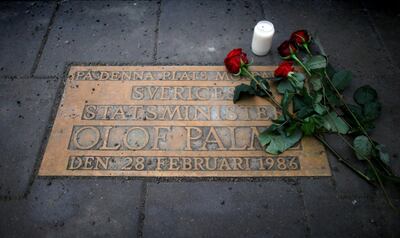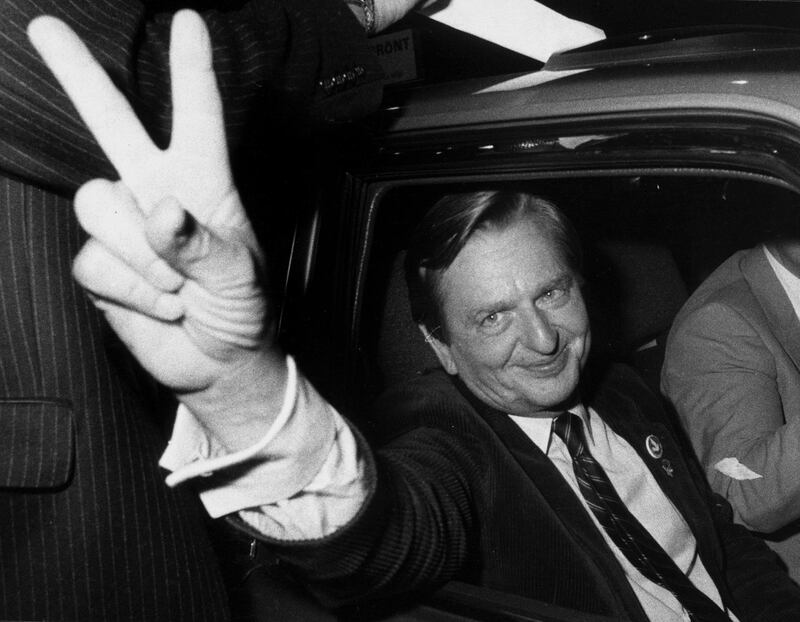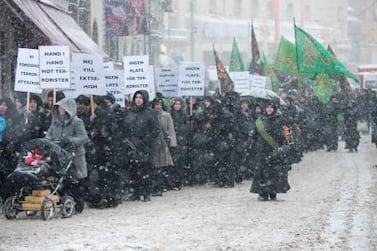Swedish investigators say they have identified who shot and killed prime minister Olof Palme 34 years ago in an effort to end one of the world’s most enduring mysteries.
Prosecutors said that local worker Stig Engstrom, who killed himself in 2000, was responsible for the murder in Stockholm of the left-leaning former leader.
The finding, announced on Wednesday, is unlikely to end the decades of conspiracy theories that had attributed his killing to shadowy forces including the CIA, Kurdish separatists and the South African security services.
Prosecutor Krister Petersson said the killer was a former graphic designer for Skandia, the insurance company that had its headquarters close by.
Engstrom was one of 20 witnesses to the shooting and was found to have lied about his role at the scene, including falsely claiming to have tried to resuscitate the prime minister.

He was briefly considered a suspect but was later labelled an inconsistent and unreliable witness after giving a detailed account of the shooting to the media.
“Since he has died, I cannot indict him,” Mr Petersson told a much-anticipated news conference in Stockholm.
He said the case would be closed. “I believe this investigation has come as far as possible,” he said.
Palme’s murder was a defining moment in Swedish history. The national trauma that followed was made worse by a botched police investigation that led nowhere.
Documentaries and new articles have appeared regularly as Swedes have tried to make sense of the case.
“This is important for the entire country,” Sweden's Prime Minister, Stefan Lofven, said. He described the case as a national “wound.”
Palme was gunned down on a quiet street corner on February 28, 1986, after he and his wife, Lisbet Palme, left a cinema in the Swedish capital. The gun, a .357 Magnum, was never recovered.
In 1989, Christer Pettersson, a local man with a history of crime, was convicted of Palme’s murder after being identified as the killer by Lisbet Palme. He was subsequently acquitted after police were unable to provide firm evidence and he has since died.
Theories for the killing of Palme, a Social Democrat who helped build Sweden’s welfare state, included right-wing extremists within the police force and in retribution for his opposition to South Africa’s apartheid regime.
Engstrom – a critic of Palme and his policies – was first identified as a suspect after a 12-year investigation by Swedish journalist Thomas Pettersson, who claimed that he had a fascination with Magnum revolvers.
“The evidence strongly suggests he was at the crime scene, but in a completely different role than the one he wished to present,” said Mr Petersson, the prosecutor.
“Had the current Palme investigation group been in charge 34 years ago, Stig Engstrom would have been remanded in custody had he been unable to provide satisfactory explanations for his movements and actions,” he said
“At one time we had a reasonable chance of securing the murder weapon as well as other evidence, and to investigate whether he had acted as part of a wider conspiracy. Now this is not possible.”

Palme sought to live as ordinary a life as possible and would often go out without any bodyguards. He had no protection on the night he was killed.
Palme was prime minister from 1969 to 1976 and again from 1982 to 1986. Some hail him as the architect of modern Sweden, but conservatives hated his anti-colonial views and criticism of the United States.
The investigation, which had been set to end in 2011 before Sweden’s parliament removed the statute of limitations, has produced records that fill 250 metres of shelf space.
Over the years more than 10,000 people have been interviewed, many of them several times, and 134 people confessed to the murder.








